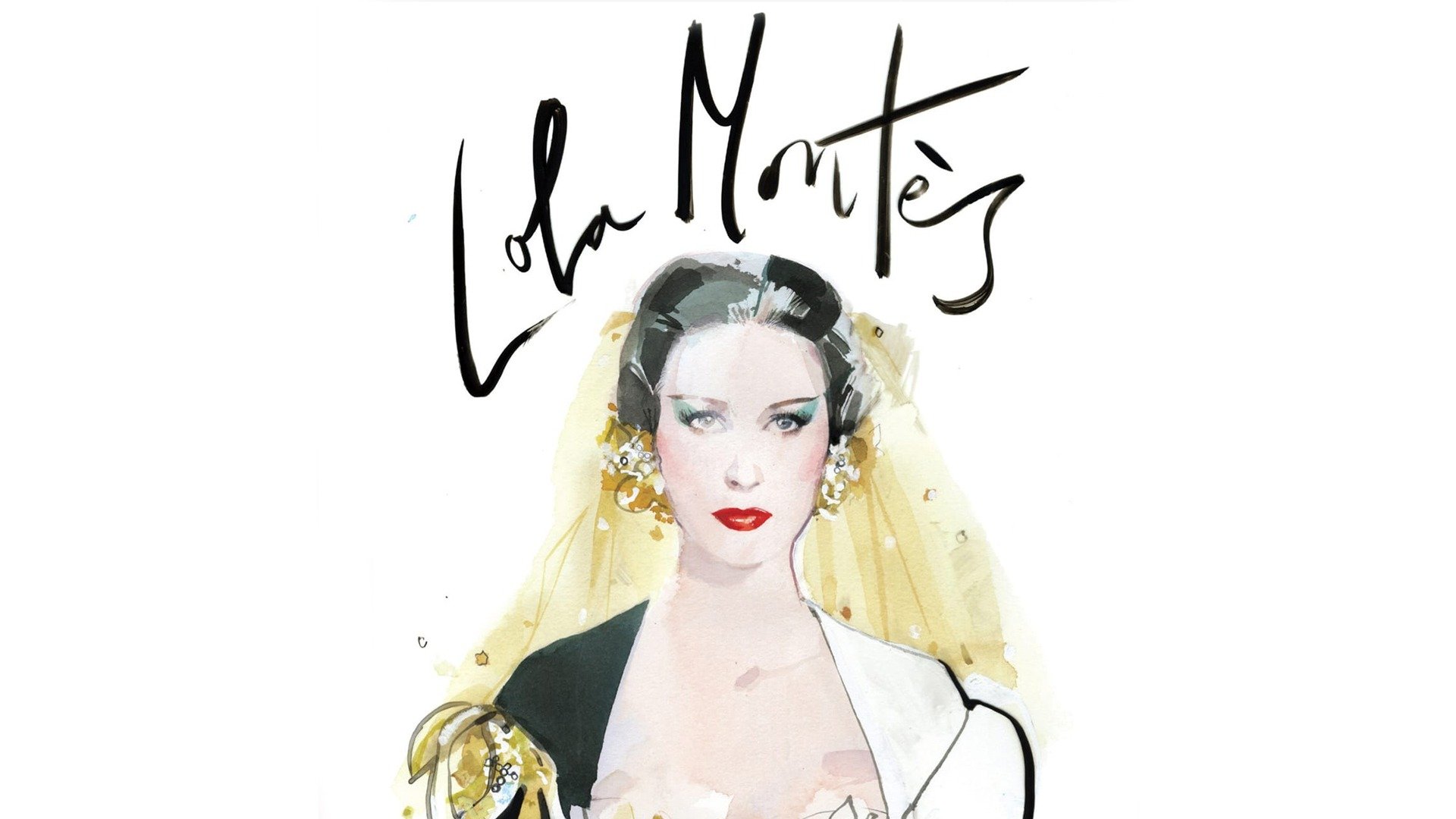
Key Takeaways:
- Lola Montès is a visually stunning French film that tells the captivating story of a legendary courtesan, Lola Montès, and challenges traditional storytelling with its innovative narrative techniques.
- Despite initial mixed reviews, Lola Montès has become a masterpiece of French cinema, inspiring other works of art and leaving a lasting impact on filmmakers and artists.
Lola Montès is a French historical drama film.
Set in the 19th century, the movie tells the captivating story of the real-life legendary courtesan, Lola Montès.
It was directed by Max Ophüls.
Renowned German-born filmmaker Max Ophüls brought this visually stunning masterpiece to life.
Released in 1955, Lola Montès was met with mixed reviews.
Despite its visually impressive cinematography, the film polarized audiences and critics alike.
The film stars Martine Carol in the title role.
French actress Martine Carol delivered a mesmerizing performance as the complex and enigmatic Lola Montès.
The screenplay was written by Annette Wademant and Max Ophüls.
The duo crafted a script that beautifully captures the essence of Lola Montès’ tumultuous life.
Lola Montès was a groundbreaking film for its time.
It pushed the boundaries of traditional storytelling and introduced innovative narrative techniques.
The film showcases extravagant and lavish production design.
The sets and costumes transport viewers to the opulent world of the 19th-century aristocracy.
Lola Montès was originally intended to be shot in color.
However, the decision was made to film it in black and white, enhancing its timeless and artistic quality.
The film’s budget was one of the largest in French cinema history at the time.
It allowed for the creation of grandiose sets and extravagant costumes that brought the era to life.
Lola Montès features a nonlinear narrative structure.
The film utilizes flashbacks and fragmented storytelling to explore the different stages of Lola’s life.
The movie was banned in several countries upon release.
Its controversial themes and explicit content led to censorship and restricted screenings in various nations.
Lola Montès was restored and re-released in 2008.
This restored version allowed a new generation of audiences to appreciate the film’s artistic brilliance.
The film’s score was composed by Georges Auric.
Auric’s hauntingly beautiful music adds depth and emotion to the captivating visuals.
Lola Montès won the 1955 International Prize at the Cannes Film Festival.
Despite its mixed reviews, the film was recognized for its artistic achievement at this prestigious event.
The character of Lola Montès has inspired other works of art.
Her intriguing life story has been the subject of novels, plays, and even an opera.
Lola Montès is known for its impressive circus scenes.
The film showcases thrilling circus performances that add excitement and spectacle to the narrative.
Lola Montès was a box office disappointment upon its initial release.
Its extravagant production costs and mixed reviews contributed to its lackluster financial performance.
The film explores themes of love, betrayal, and societal expectations.
Lola Montès’ complex relationships and struggles against societal norms make it a thought-provoking watch.
The film’s cinematography is visually stunning.
Max Ophüls’ masterful camera work creates breathtaking and memorable images throughout the film.
Lola Montès was Ophüls’ final film.
It serves as a fitting swan song to the career of one of cinema’s greatest visual storytellers.
The movie was a technical achievement for its time.
Its innovative use of camera movements and intricate set designs pushed the boundaries of filmmaking.
Lola Montès explores the notion of identity.
The film delves into the idea of how societal roles and expectations can shape an individual’s sense of self.
The film’s costumes were meticulously researched and designed.
Every detail of the costumes reflects the fashion and style of the 19th century.
Lola Montès features a memorable final scene.
The film concludes with a powerful and emotionally charged sequence that leaves a lasting impact on the audience.
The movie was shot on location in France and Germany.
Various picturesque locations were used to bring Lola Montès’ world to life.
Lola Montès was a financial setback for its production company.
The film’s high production costs contributed to financial difficulties for Gamma Film.
The film’s fictionalized narrative blends fact and fiction.
While based on true events, Lola Montès takes creative liberties to heighten the dramatic impact of the story.
The movie was influenced by German expressionism.
Ophüls’ background in German cinema is evident in the stylistic choices and visual aesthetics of the film.
Lola Montès uses the circus as a metaphor.
The circus serves as a symbol for Lola’s life, where she is constantly performing for the entertainment of others.
The film’s narrative is told through various perspectives.
Different characters provide their own interpretations and memories of Lola Montès, adding layers of complexity to the story.
The movie features stunning costume changes.
Lola Montès’ elaborate wardrobe showcases the opulence and extravagance of her lifestyle.
Lola Montès challenges traditional gender roles.
The film explores the limitations placed upon women in society and Lola’s defiance against societal expectations.
The film’s editing techniques enhance its storytelling.
The seamless transitions between past and present create a mesmerizing and immersive viewing experience.
Lola Montès was critically reassessed in later years.
Though initially met with mixed reviews, the film is now regarded as a masterpiece of French cinema.
The movie’s title character represents a complex and multidimensional woman.
Lola Montès defies categorization and challenges societal norms through her actions and choices.
The film’s production faced numerous challenges.
Budget constraints, weather conditions, and logistical issues all posed obstacles during the filming process.
Lola Montès was inspired by the biography written by Cécil Saint-Laurent.
Saint-Laurent’s in-depth research of Lola’s life served as the basis for the film’s narrative.
The film’s runtime was initially shortened for its American release.
The American version of Lola Montès was edited down to appeal to a wider audience.
Lola Montès has influenced filmmakers and artists.
Its innovative storytelling and visual style have left a lasting impact on cinema and the arts.
The movie’s ending remains open to interpretation.
Lola Montès concludes with a thought-provoking sequence that invites viewers to contemplate the complexities of Lola’s life.
Conclusion
In conclusion, “Lola Montès” is a fascinating movie that offers viewers a unique and captivating cinematic experience. With its stunning visuals, compelling storyline, and brilliant performances, it has managed to leave a lasting impact on audiences and critics alike. The film’s exploration of love, desire, and the complexities of human relationships makes it a thought-provoking and deeply emotional piece of art.
Through this article, we have examined 40 interesting facts about “Lola Montès,” shedding light on its production, historical context, and the talented individuals who brought it to life. Whether you are a fan of classic cinema or simply looking to expand your movie knowledge, these facts offer valuable insights that enhance the viewing experience and appreciation of this remarkable film.
With its blend of history, drama, romance, and visual grandeur, “Lola Montès” continues to be a captivating movie that stands the test of time. It remains a testament to the brilliance of its director and the creativity of its entire cast and crew. If you haven’t seen “Lola Montès” yet, it’s definitely a film worth adding to your must-watch list.
FAQs
1. Who directed the movie “Lola Montès”?
The movie “Lola Montès” was directed by Max Ophüls, a renowned German-French filmmaker known for his distinctive visual style and auteur approach to filmmaking.
2. When was “Lola Montès” released?
“Lola Montès” was released in France on December 23, 1955.
3. What is the historical context of “Lola Montès”?
Lola Montès” is based on the real-life story of Lola Montez, a 19th-century dancer and courtesan who had relationships with prominent figures of the time, including King Ludwig I of Bavaria.
4. What awards did “Lola Montès” receive?
Despite its critical acclaim, “Lola Montès” was not a commercial success upon its release. However, over the years, it has gained recognition as a classic and has won awards for its cinematography and artistic merits.
5. How does “Lola Montès” stand out among other films of its time?
“Lola Montès” is notable for its innovative storytelling technique, particularly the use of flashbacks and nonlinear narrative. It also stands out for its visually striking sets and costumes, capturing the grandeur of the era it portrays.
Was this page helpful?
Our commitment to delivering trustworthy and engaging content is at the heart of what we do. Each fact on our site is contributed by real users like you, bringing a wealth of diverse insights and information. To ensure the highest standards of accuracy and reliability, our dedicated editors meticulously review each submission. This process guarantees that the facts we share are not only fascinating but also credible. Trust in our commitment to quality and authenticity as you explore and learn with us.


